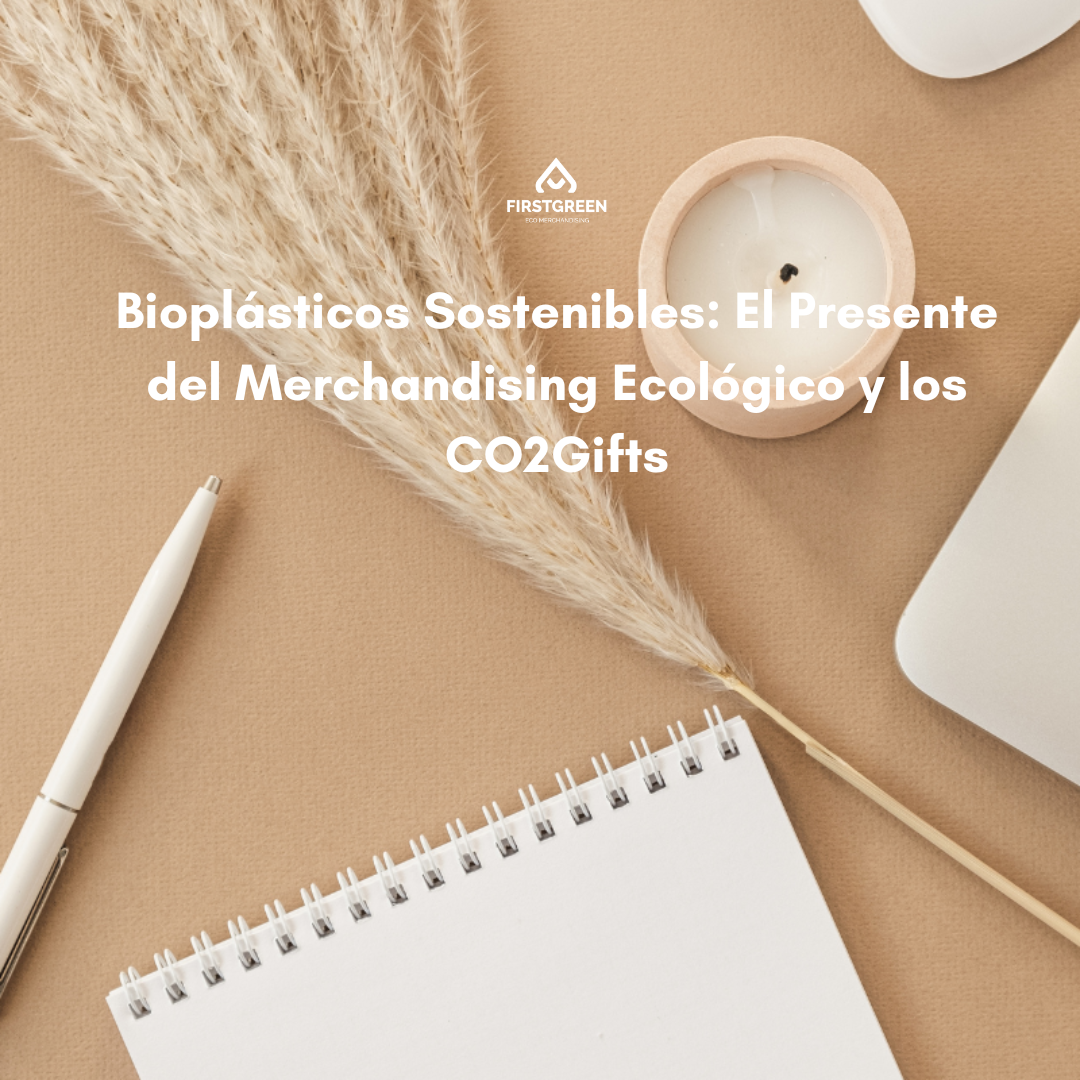Adapting to the needs of the moment to innovate and move forward is the wheel that moves the world, and at this moment one of the most pressing needs is the reduction of the carbon footprint that pollutes the planet and delaying as much as possible the carbon emissions produced by man that accelerate and accentuate the climate change that we already suffer.
The Rise of Sustainable Bioplastics in Eco-Merchandising
The shift towards a more sustainable path is a driving force affecting all types of industries that invest in research to obtain new raw materials that create alternatives in the manufacture of sustainable materials, reduce the use of materials derived from finite and polluting fossil resources, and optimize energy efficiency in existing production systems. This is also true in the eco-friendly merchandising industry. There is a growing demand for environmentally responsible, recyclable products. As a result, online stores specializing in personalized, compostable, biodegradable merchandise and CO2Gifts are now dedicated exclusively to selling eco-friendly products. Among these innovations, sustainable bioplastics, developed from organic waste, are emerging as a key solution for offsetting carbon footprints and promoting compostable and biodegradable corporate gifts.
Innovation in Bioplastics: A green solution for merchandising and CO2 Gifts
The qualities of plastic—transparency, flexibility, and lightness—allow us to live comfortably, but its negative impact on sustainability is very visible and contributes significantly to environmental pollution. Therefore, bioplastics are an essential alternative for environmentally conscious companies committed to social responsibility, and eco-friendly merchandising is a prime example. The use of bioplastics in sustainable corporate gifts has led to the creation of innovative products that reinforce brands' environmental commitment. Here are some examples of the bioplastics used in CO2Gifts , along with their carbon footprint calculations.
Biodegradable pens: Environmentally friendly merchandising
Biodegradable merchandising, made from bioplastics derived from agricultural waste, is a perfect option for corporate events and conferences. An innovative example of eco-merchandising and sustainable advertising is coffee fiber, a novel material obtained from recycled coffee grounds. With coffee fiber, you can create sustainable and environmentally friendly promotional items such as writing materials (pens and pencils), sustainable school supplies for training companies, coffee fiber notebooks and journals with a carbon footprint tracker (such as innovative and differentiating CO2Gifts), and a wide range of eco-friendly office accessories for businesses, such as business card holders, pen holders, and other personalized desk items. These products contribute to an eco-conscious corporate image.
Eco-Friendly Coffee Fiber Pen for Customization with Twist Mechanism (Trall) Rating GREEN_Label A.
Reusable and Compostable Bottles: Sustainable Promotional Products
Compostable bioplastics These are materials designed to decompose completely under composting conditions, transforming into carbon dioxide, water, and biomass without leaving toxic residues.
PLA (Polylactic Acid), also called wheat straw or cane, is one of the most widely used eco-friendly materials in carbon reduction strategies and packaging. With logo design, it is a compostable bioplastic widely used in personalized eco-friendly marketing gifts for trade fairs, events and congresses, as an alternative in carbon footprint offsetting, derived from agro-industrial waste, requires less energy and chemical processes for its production, saves on agro-industrial waste and reduces the need for fossil resources, it is widely used for sustainable food merchandising dedicated to food packaging, cups and disposable cutlery.
Kutyl 830ml Compostable PLA Eco-Friendly Water Bottle for Customization with Special ECO Label and Rating for Office Use GREEN_Label B.Eco-friendly USB flash drives: Sustainable Innovation in Tech Merchandising
The digital age needs materials that adapt to constant innovation in sustainability with sustainable materials, such as bamboo, cork, hemp, wood or wheat straw, that are flexible, compostable and compatible with the energy efficiency needs set by the technology merchandising sector. Sustainable. Eco-friendly USB drives have covers made from bioplastics, offering a modern and sustainable touch to an essential accessory in the digital age. The sustainability of these promotional products, in addition to being functional and attractive, reinforces the company's environmental impact and its image as a leader in sustainability.
Mozil 16GB Sustainable USB Flash Drive Made from Wheat Straw and Aluminum, Customizable and GREEN_Label B Rated
Environmental benefits of bioplastics
Bioplastics are created from renewable sources such as fruit peels, corn, or agricultural waste, reducing dependence on petroleum-based plastics. Compared to conventional plastics, bioplastics reduce environmental impact in ways such as:
1.- Reduction of carbon footprint; Its raw material comes from plants that absorb CO2 during their growth, bioplastics help to create a closed carbon cycle, decreasing the emission of greenhouse gases (GHG).
2.-Reduction of carbon footprint through energy savings in production; Bioplastics can require less energy in their manufacture than conventional plastic, thus optimizing energy efficiency.
3. Use of renewable resources; Bioplastics are produced from biomass, such as plants and organic waste, which reduces dependence on fossil fuels and promotes the use of renewable raw materials.
4. Biodegradability and compostability; Many bioplastics are biodegradable and compostable, that is, they decompose naturally in the environment, reducing the accumulation of persistent waste.
5.- Absence of harmful additives: Bioplastics are usually free of harmful additives such as phthalates or bisphenol A, making them safer for food contact applications and other sensitive uses.
6. Recyclability and promotion of circular energy: Some types of bioplastics, such as Bio-PET, are recyclable and can be integrated into existing recycling systems, facilitating their management at the end of their life. By utilizing organic waste, these materials promote a more sustainable life cycle.
Moving towards carbon neutrality or emissions reduction requires a broad commitment, from the innovations of large corporations to eco-branding and green marketing strategies, and the small actions each of us can take individually: reducing, reusing, and recycling. It's about leading a sustainable and healthy life that values reducing polluting waste, reusing existing products, and recycling end-of-life items to give them a new life. At CO2Gifts, we offer "Personalized Sustainable Backpacks: The Art of Reusing CO2Gifts." It shows the benefits of how sustainable merchandising reuses and offsets the carbon footprint.






